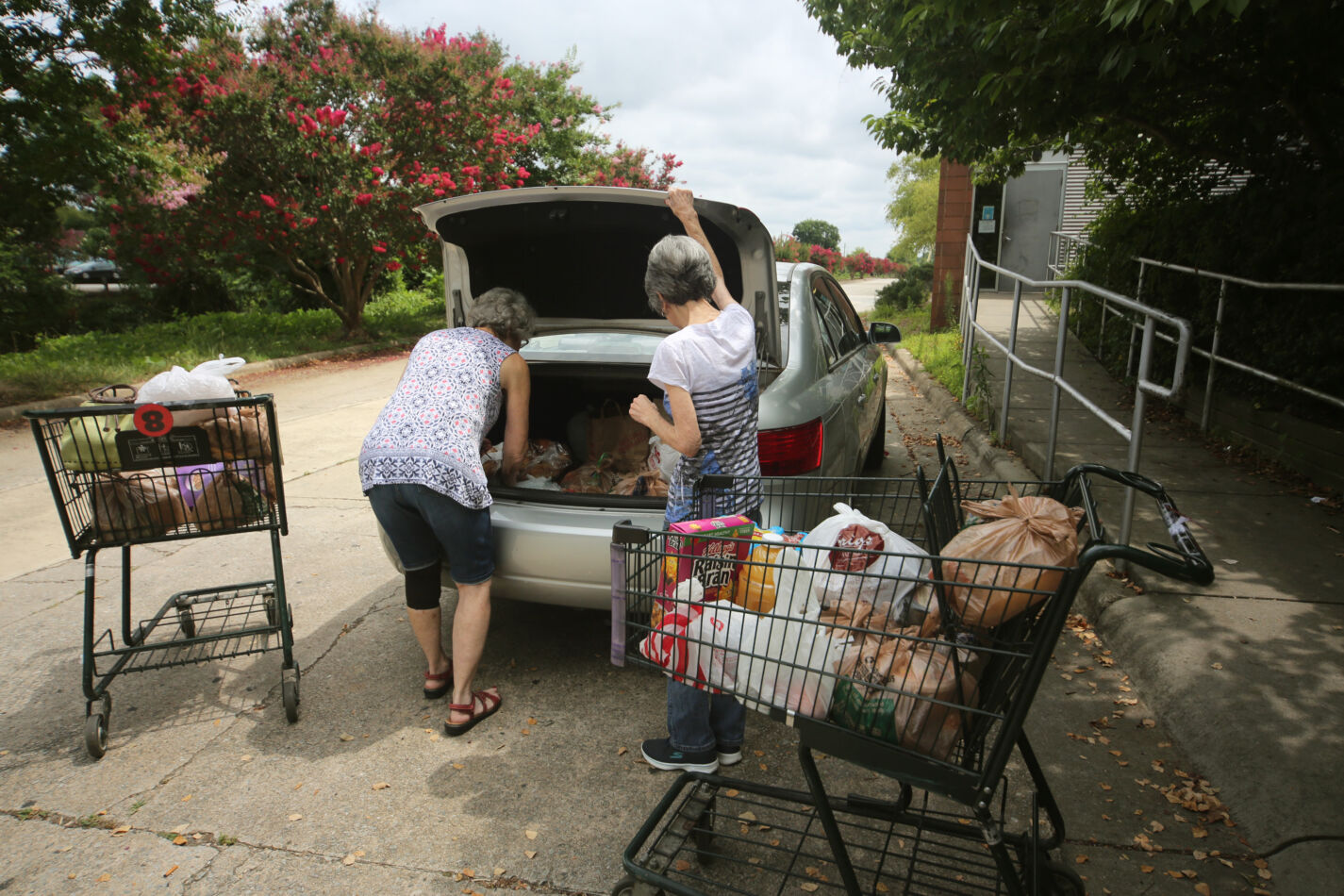Food deserts and food insecurity are pain points here in North Carolina and across the nation. Sowing resilience by meeting these challenges often requires complex solutions; however, by directly addressing these issues, rather than cowering in fear, we can discover solutions to real problems that impact the lives of real people every day.
Carolina Journal has spoken with many experts involved in solving problems and impacting the lives of people who are most affected by these issues. This week we spoke with Dr. Peter Morris, Executive Director of Urban Ministries of Wake County, who holds a master’s degree in divinity, about facing the challenge of food deserts.

“Historically, southeast Raleigh and northeast Wake County were the least wealthy parts of the county and less likely to have grocery stores – like Food Lion, Harris Teeter, or Whole Foods,” Dr. Morris told the Carolina Journal. “When Wake County GIS did ‘heat maps’ they used SNAP, WIC and Medicaid participation to show where lower income individuals might live – and these were the areas that lit up. There were always some exceptions to the “inner city” and rural area concentrations largely having to do with where there was affordable housing (defined for our purposes as affordable to individuals with 30-40% of the median family income – today that median income is $92,000-94,000 depending on your source). Mini City, up Capital Boulevard, where it intersects with Millbrook, was one of those areas.”
Dr. Morris points out that there are still places to purchase food in these areas. Whether it be gas stations or convenience stores, they often sell basics such as milk, eggs, bread, sometimes meat, and occasionally even fresh produce. However, these convenient options do at a significant mark-up to a typical grocery story.
Some factors that impact food deserts are the cost of real estate in urban areas. Zoning laws can limit flexibility as well, often requiring a certain number of parking spaces based on the “expected traffic” that makes central urban locations less feasible beyond and the premium paid for urban real estate.
“It was, in fact, gentrifying with starter homes for young middle class couples,” says Dr. Morris. “Though now, you see the infill building that is occurring using space very efficiently: ground level parking garage and three levels above, narrow, and a row of 3 to 6 of these new construction, with prices reaching a million dollars in some locations.”
Federal funding allowed housing authorities to tear down tightly packed apartment buildings and rebuild single-row houses and pricier apartment complexes, but this resulted in fewer units overall. For Dr. Morris, there maybe a silver lining: with people being pushed out of Raleigh, they’re moving into the southeast to Garner, Wendell, Knightdale, and Zebulon — areas that feature shopping centers and chain grocery stores in well-traveled areas. These areas attract better products but do require transportation to get there.
“So, you could say, low income, property costs, rentals replaced by gentrification, poor transportation, and the business prospects made it unlikely for a store to locate convenient to a neighborhood,” said Dr. Morris.
Interruptions in the supply chain caused by pandemic policies and the war in Ukraine, as well as general upward pricing pressure, have all led to significant food inflation. Food insecurity did rise during the pandemic, and the CARES Act increased the Supplemental Nutritional Assistance Program (SNAP) package for a single-person household from $290 to $365-80 a month, but that bump ended in March of 2023.
“The Food Bank of Central and Eastern NC, which gets its data from the American Community Survey, showed decreased in the number of food insecure families [during the SNAP increase],” said Dr. Morris. “And now, it is creeping backup. Or, per the food bank, and even our own food program at Urban Ministries, increasing by 40-60% — we have to await the next ACS to show that change.”
The Urban Ministries Hunger and Nutrition Program served approximately 43 families per day before the pandemic. During the pandemic, it grew to about 85 families per day and has not declined much since then. Partner agencies also requested to prepare health food boxes for families without transportation, increasing the number by an additional 180 boxes a week. That number declined a bit in mid- to late 2023 but returned with a vengeance in 2024.

“Help families earn a living wage and the wealth will have businesses seek out where they live and food deserts might disappear – there would still, of course, be food insecure families because with no paid sick leave, and chronic illness, and family separation – the family loses income, loses housing, and loses the ability to purchase what they need,” said Dr. Morris.
Dr. Morris identified two shifts that he predicts will occur in food deserts in the next five to ten years, especially when it comes to larger counties such as Wake and Mecklenburg. “I think it’s going to shift from being largely an urban issue to more and more a rural issue,” he said.
The second shift that Dr. Morris predicts is regarding public policy in terms of programs such as SNAP and WIC and what is done in terms of funding, and how easy or hard it is to enroll in the program.
Wake County is the 14th largest school district in the nation and North Carolina is the ninth largest state.
“We’re gaining congressional seats, we’re gaining influence,” said Dr. Morris. “We at least represent a rural constituency. And as congressional seats go to these rural constituencies, these rural constituencies are going to ask for things to happen for them. So, I think this will be good for us in the public policy realm.”
This is the second installment in our “Sowing Resilience” profiles. The first installment, featuring a local farmer, can be read here.